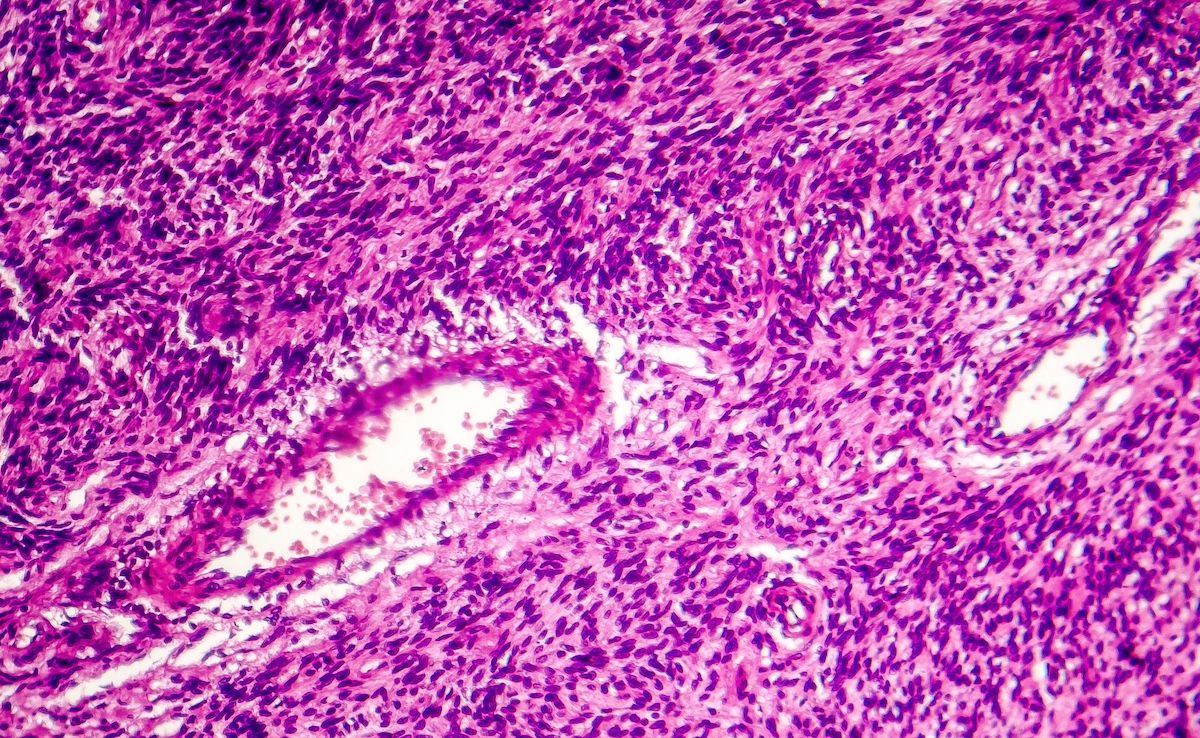News
Article
Consolidative Radiotherapy a Potential Treatment for Extramedullary AML
Author(s):
The treatment showed effectiveness in achieving local control of acute myeloid leukemia (AML) that developed in the eyes of a pediatric patient.
Select patients with extramedullary acute myeloid leukemia (AML), when resistant to standard induction chemotherapy, can consider treatment with consolidative proton radiotherapy (PT), according to observations from a case study published in International Journal of Particle Therapy.1
When AML is present outside of the bone marrow and includes the involvement of other hematopoietic organs and soft tissue infiltration, it is considered extramedullary disease. Standard treatment for AML involves induction chemotherapy; however, many patients become resistant after increased treatment, leading to a high mortality rate in pediatric patients.
Due to a lack of previously research in this setting, the present investigators sought to examine the effect that consolidative radiation therapy has on patients with pediatric AML. This type of therapy is used in select cases to help bridge certain patients to stem cell transplants and improve local control rates.
In the present case, the investigators felt proton radiotherapy was particularly advantageous due to the patient's young age and neighboring organs also at risk | Image Credit: wendyhayesrise-stock.adobe.com

A previously healthy 7-month-old female patient presented to an emergency department with respiratory issues and lethargy, the case report describes. A bone marrow biopsy revealed 50% bone marrow involvement by AML.
The patient was enrolled in a clinical trial in which she was treated with standard chemotherapy, receiving liposomal daunorubicin and triple intrathecal chemotherapy with each cycle. After 2 cycles, however, the patient’s parents reported the development of cloudiness in her eyes, which was reported to be “highly unusual.”
After undergoing an MRI of the brain and eye orbits, prominent bilateral anterior changes of the eyes were revealed. A biopsy was performed, and surgical pathology from the left iris revealed an extensive presence of relapsed extramedullary AML.
The patient’s eye cloudiness minimally improved after 1 cycle of standard systemic therapy with weekly intrathecal therapy. She was eventually referred for PT to focus treatment on the extramedullary AML involvement in her eyes. She then received 24 cobalt gray equivalent (CGE) at 2 CGE/daily fraction to treat the disease, and all treatments were performed without any significant adverse effects.
While she awaited a stem cell transplant upon completion of radiotherapy, she began bridging chemotherapy that included low-dose cytarabine monotherapy, and underwent an additional bone marrow biopsy that showed no evidence of AML.
An MRI 2 weeks following radiotherapy showed similarly positive results. One-month post radiotherapy, there remained no evidence of residual AML, and the patient was classified as being in remission.
Despite its rarity in adults, where it is present in less than 5% of cases, extramedullary AML is common in pediatric patients and can be present in up to 40% of cases. Prior research, such as that published by Zimmerman and Font and Murthy et al, has focused on case series, rather than a single case study.2,3 In addition, this prior literature also analyzes an initial presentation of orbital extramedullary AML, rather than the setting of refractory disease, which the authors of the present study focus on.
“To our knowledge, a presentation of corneal clouding in the setting of relapsed or initial-onset AML has never been previously described,” the investigators wrote, which they noted made the presentation of bilateral ocular globe infiltration more unusual.
Low-dose radiotherapy has demonstrated “excellent local control “outcomes in prior studies. A previous case study that examined treating extramedullary myeloid sarcoma with radiotherapy found that the treatment was useful in a case such as their own, where the myeloid sarcoma was causing local symptoms.4
The present investigators felt that PT was particularly advantageous for the case of this patient due to her young age and the nearby organs also at risk.
“Given the increased prevalence of extramedullary AML in pediatric patients, it is also worth considering the utilization of PT to mitigate damage to nearby organs and the risk of secondary malignancies,” the investigators concluded.
References
1. Bush A, Eslin DE, Joyce MJ, et al. Consolidative proton radiotherapy for pediatric extramedullary ocular acute myeloid leukemia. Inter Journ Part Therapy. 2024;11:100002. doi:10.1016/j.ijpt.2023.12.001
2. Zimmerman LE, Font RL. Ophthalmologic manifestations of granulocytic sarcoma (myeloid sarcoma or chloroma). The third Pan American Association of Ophthalmology and American Journal of Ophthalmology Lecture. Amer Journ Ophthal. 1975;80(6):975-990. doi:10.1016/0002-9394(75)90326-8
3. Murthy R, Vemuganti GK, Honavar SG, Naik M, Reddy V. Extramedullary leukemia in children presenting with proptosis. J Hematol Oncol. 2009;2:4. doi:10.1186/1756-8722-2-4
4. SR Graham. Treatment of extramedullary myeloid sarcoma with radiotherapy. Cureus. 2021;13(6):e15676. doi:10.7759/cureus.15676





